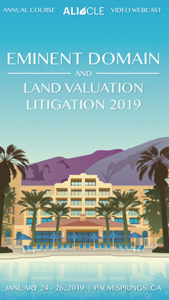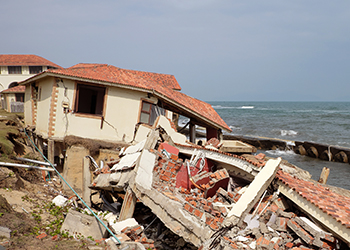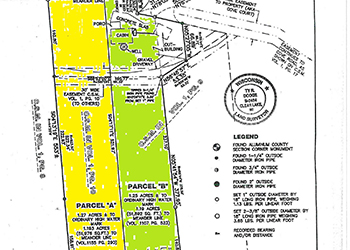
Property Rights Primer, Part 1: What Are a Tenant’s Rights When the Government Condemns Leased Property?
Of the many things that landlords and tenants are thinking about when entering into a new lease, the possibility that the property might be subjected to eminent domain proceedings is usually very low on the list. But condemnation cases do happen, and it is important for both the landlord and tenant to consider that possibility (and have an understanding of property rights in eminent domain litigation).
Understanding what rights a tenant has under common law principles, how and when those rights are valued, and how they can be modified by the terms of a condemnation clause in the lease is critical to addressing these things. It is challenging enough to face a taking by a governmental entity and the prospect of litigation that this entails. It is even more challenging to face a second set of litigation problems when the landlord and the tenant cannot agree about how their rights will be affected or who will be compensated. Having a clear and well-understood road map of what will happen if the government comes knocking on the door is the best way to avoid these problems.
This is the first in a three-part series addressing some of the common questions we hear in our eminent domain practice at Faegre Baker Daniels from our landlord and tenant clients about these issues.
How are a tenant’s rights treated in condemnation?
A tenant’s leasehold interest is a property right entitled to compensation if taken or damaged in a condemnation action. Unless a condemnation clause in the lease changes things, a tenant is usually entitled to compensation for the value of its leasehold estate and, in partial takings cases, damages to the portions of it not taken.
How are a tenant’s rights valued?
A tenant’s interest in the lease itself is typically measured by the difference between market rental rates and the contract rate provided for in the lease. To the extent the contract rate is below market, the lessee has a “bonus value” in the property that can be calculated over the life of the lease and discounted back to present value.
A tenant is also typically entitled to the value of any buildings or site improvements it has constructed on the property. This is generally true even when the lease requires the tenant to remove the improvements at the time the lease is terminated. The improvements are often valued based upon their contributory value to the overall property, as measured by comparable sales of similar improved properties or the income generated by such properties, and then backing out the underlying land value. They are sometimes also valued under a “cost approach,” where an appraiser determines how much it would cost to construct a
similar building today and then reduces its value for “depreciation” to account for its age and condition.
Finally, if only part of the property is taken, a tenant is typically entitled to any reduction in the value of its remaining leasehold interest caused by taking part of the property and the impacts of the project upon the remainder. These impacts are often referred to as “damages to the remainder,” “severance damages,” or simply “damages.” Different states have different rules
about how damages are measured and for what types of damages a landlord or tenant should receive compensation. If a damage causing a reduction in the property’s value can be fixed (such as by replacing a sign or fence that has been removed by the government’s project, reconstructing a drive aisle, or re-striping a parking lot), this lesser “cost to cure” expense is typically awarded instead. Whether the landlord or tenant is entitled to such damages may depend upon a number of issues, including the length of the lease and the type of damages incurred.
When and how do compensation decisions get made?
How a tenant can present claims for compensation depends upon the state that you are in.
A few states allow a tenant to present direct claims for compensation at a valuation trial, and the jury or fact finder can then award separate values to the tenant, the landlord and other interested parties.
But most states don’t allow for this. They instead follow the “undivided fee” or “unit” rule, whereby a condemnation award is initially made on a lump sum basis, as if only one person owned the whole property. After that award is returned, the condemnor deposits the money and takes the property. Then anyone who has an interest in the property makes a claim for
their portion of the award. In these jurisdictions, most settlements are made on a global basis, and neither the landlord nor the tenant can bind the other to an agreement with the condemnor without their consent.
If the parties cannot reach an agreement about how to divvy up the award, these issues are then litigated in a subsequent proceeding. This process is typically called the apportionment phase of the case, and the hearing, not surprisingly, is called an apportionment hearing.
Can the lease change these rules?
Lease provisions can, and often do, change these common law rules and procedures by adding a “condemnation clause” indicating what will happen if an eminent domain case is threatened. That will be the subject of our next article.
[line]
About the Author
 Jack Sperber has been representing private owners and condemning entities in eminent domain proceedings for 25 years. He does this work around the country, and has been involved in more than 30 trials, numerous evidentiary hearings, and more than 20 appellate arguments.
Jack Sperber has been representing private owners and condemning entities in eminent domain proceedings for 25 years. He does this work around the country, and has been involved in more than 30 trials, numerous evidentiary hearings, and more than 20 appellate arguments.
Mr Sperber is a planning co-chair for ALI CLE’s Eminent Domain and Land Valuation Litigation 2019 conference. To learn more about this upcoming conference in Palm Springs, CA, click here: www.ali-cle.org/CA007
© 2018 Faegre Baker Daniels LLP. All Rights Reserved. The foregoing article is reprinted with permission. For more information about this publication and more, please visit Faegre Baker Daniels website by clicking here.




